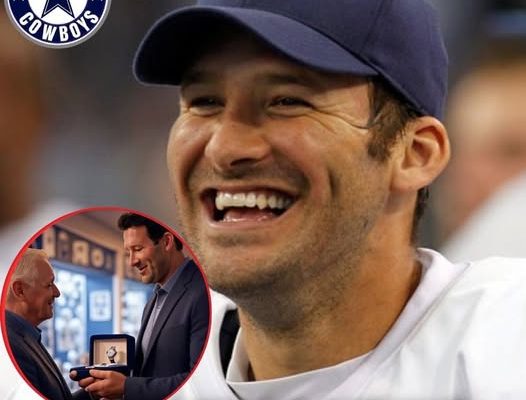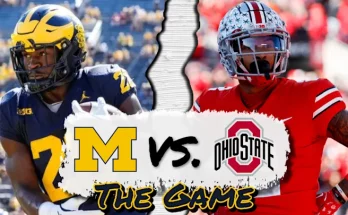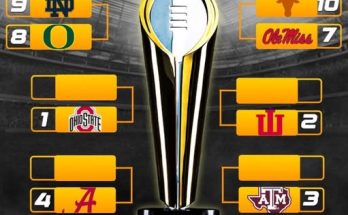In an era dominated by performative gestures, media hype, and the constant need for validation through headlines and hashtags, it’s becoming increasingly rare to witness a moment of pure sincerity. But that’s exactly what happened when former Dallas Cowboys quarterback Tony Romo made a quiet, unannounced return to the Cowboys facility this past week. There were no reporters tipped off, no social media posts made, no grand announcement. What happened instead was something that instantly became the stuff of legend—not because of its public nature, but precisely because it wasn’t. During this discreet visit, Romo delivered a gesture so personal and heartfelt that it rippled through the organization with quiet power: he presented every current Cowboys player and select staff members with a custom $250,000 Dallas Cowboys-themed timepiece, accompanied by a handwritten note for each recipient. There were no cameras, no speeches, and no interviews—just Romo, his gifts, and the kind of emotional gravity only genuine appreciation can generate.
The watches themselves were stunning. Designed with an attention to detail that reflected Romo’s meticulousness on the field, each timepiece was a marvel of craftsmanship. Made by a luxury Swiss manufacturer rumored to be behind some of the world’s most exclusive watches, the Cowboys edition featured blue and silver accents, the team’s iconic star logo subtly embedded on the face, and each player’s jersey number delicately engraved on the back. But it wasn’t the price tag that made the gift remarkable. It was the meaning. It was the message. For Romo, time has always been a theme—something he learned to manage in high-pressure game situations, and something he’s come to value more than ever in retirement. The watches, in that sense, weren’t just tokens of wealth or flair; they were symbolic. They represented shared seasons, locker room stories, broken bones, near victories, crushing defeats, and the invisible thread that binds those who have ever played the game together on the same field.
The accompanying notes were, by all accounts, just as powerful as the timepieces. Each one was personalized—no copy-paste sentiments, no generic “thank yous.” A veteran defensive lineman reportedly received a message recalling a critical 3rd-and-1 stop in a 2014 game against the Seahawks. A young wide receiver was thanked for reigniting the Cowboys’ vertical game, which Romo said “felt like watching a younger Dez.” One staff member—an assistant trainer—shared that his note simply said, “Thanks for always keeping me on the field when I probably shouldn’t have been. You saved my Sundays.” Those notes weren’t designed for the public eye. They were not drafted by a PR team or filtered through management. They were written in Romo’s own hand, sealed in crisp white envelopes, and handed out one by one as he moved silently through the facility, hugging former teammates, shaking hands with new players, and sharing quiet moments with old colleagues.
The context of this gesture only deepens its meaning. Romo, who retired in 2017 and transitioned seamlessly into broadcasting, has always remained connected to the game. But he’s done so at a distance. Since stepping away from football as a player, Romo has not sought to linger in the Cowboys’ shadow. Unlike some former players who continuously orbit the franchises they once led, Romo intentionally gave Dak Prescott room to grow. He didn’t hover, didn’t opine weekly about the team’s direction, and didn’t insert himself into the narrative post-retirement. That’s what made his reappearance all the more significant. It wasn’t about Romo reasserting his legacy. It was about Romo showing love in the most unselfish way he could.
The Cowboys organization was reportedly caught off guard by his visit—but in the best possible way. According to sources within the team, Romo coordinated the drop-in quietly with a couple of longtime facility staffers and declined any media presence whatsoever. Word of his arrival didn’t leak until after the fact, and even then, it wasn’t Romo who said anything—it was the players and staff, still visibly moved, who began sharing the story among themselves. Some took to social media only days later, but even those posts were understated, more about the impact than the item itself. No flashy photos of the watches emerged. No close-up selfies with Romo. Just reverent awe.
Several veteran players were reportedly overwhelmed by the gesture, not because of the monetary value of the watches, but because of the man behind them. For those who played with or under Romo, the memory of his toughness, leadership, and relentless competitiveness is still fresh. They remember him playing through broken ribs, suffering injuries that would sideline most players for weeks, and refusing to complain about a single hit. Younger players, meanwhile, know him as the voice calling their games on national television—cool, polished, analytical—but perhaps didn’t grasp the full extent of who Tony Romo was as a player and a leader. This gesture bridged that gap. It told them, without words, “I see you. I value what you’re doing. And I respect the jersey you wear.”
The significance of the watches also taps into something much deeper: legacy. Time, after all, waits for no one. Players come and go. Coaches change. Stadiums evolve. But moments—the kind that matter—remain frozen. Romo’s gesture was his way of telling the Cowboys that their moments together still live within him. And in gifting them timepieces, he handed them a reminder that these years in their careers, the hard ones and the high ones, are fleeting—and precious. Whether a player has been with the team for ten years or ten weeks, that message resonates. It’s the kind of gesture that lingers.
It’s also a rare example of the kind of leadership Romo was always known for—but too often underappreciated for. He was never the loudest guy in the room. He didn’t make speeches just to hear himself talk. But when Romo spoke, people listened. When he acted, they remembered. He understood that football is not just about yards gained or games won—it’s about people. Relationships. Sacrifices. Brotherhood. This gesture, then, wasn’t just a gift. It was a final pass thrown directly to the heart of the Cowboys locker room, complete with precision, touch, and perfect timing.
It’s also worth noting that Romo has never been driven by optics. He was an undrafted free agent out of Eastern Illinois. Nothing was handed to him. He had to earn every snap, every contract, every accolade. In that context, his return wasn’t a victory lap. It wasn’t a calculated branding move. It was personal. Romo has often spoken about how grateful he feels for having been part of the Cowboys family, and this was simply the most Romo-like way to say it: quietly, generously, and with no need for applause.



